Allowing imagination to run wild is the beginning of creativity — it’s more than brainstorming. Creativity running wild will embrace every idea that confronts it.
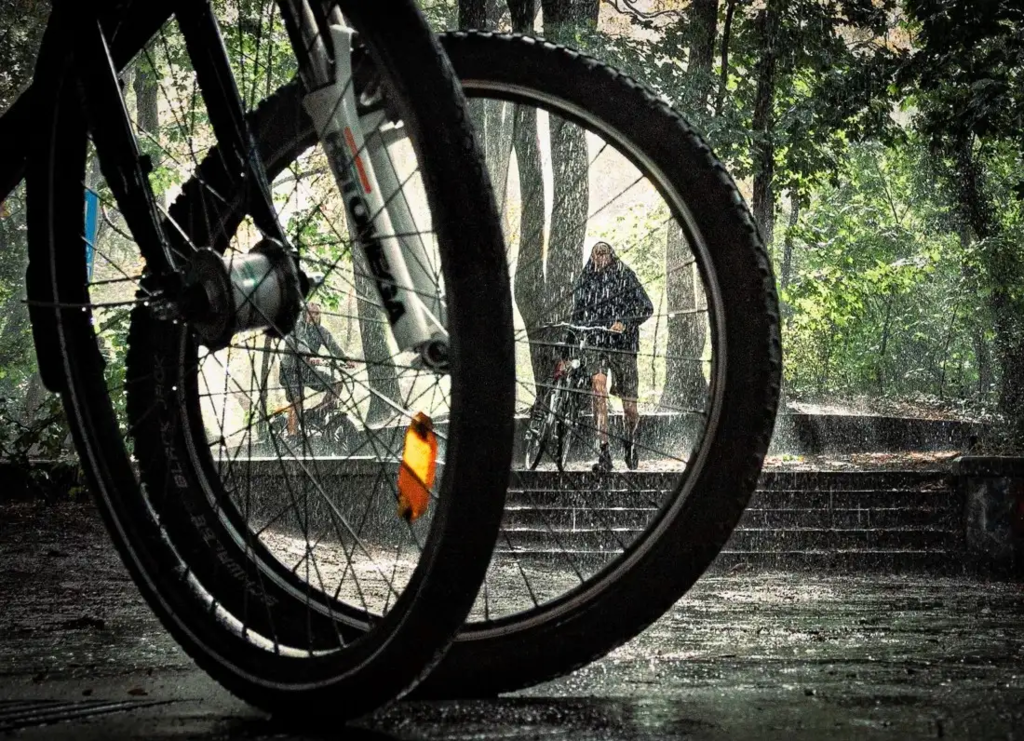
“The soul of a landscape, the spirits of the elements, the genius of every place will be revealed to a loving view of nature.”
– Karl Jaspers.
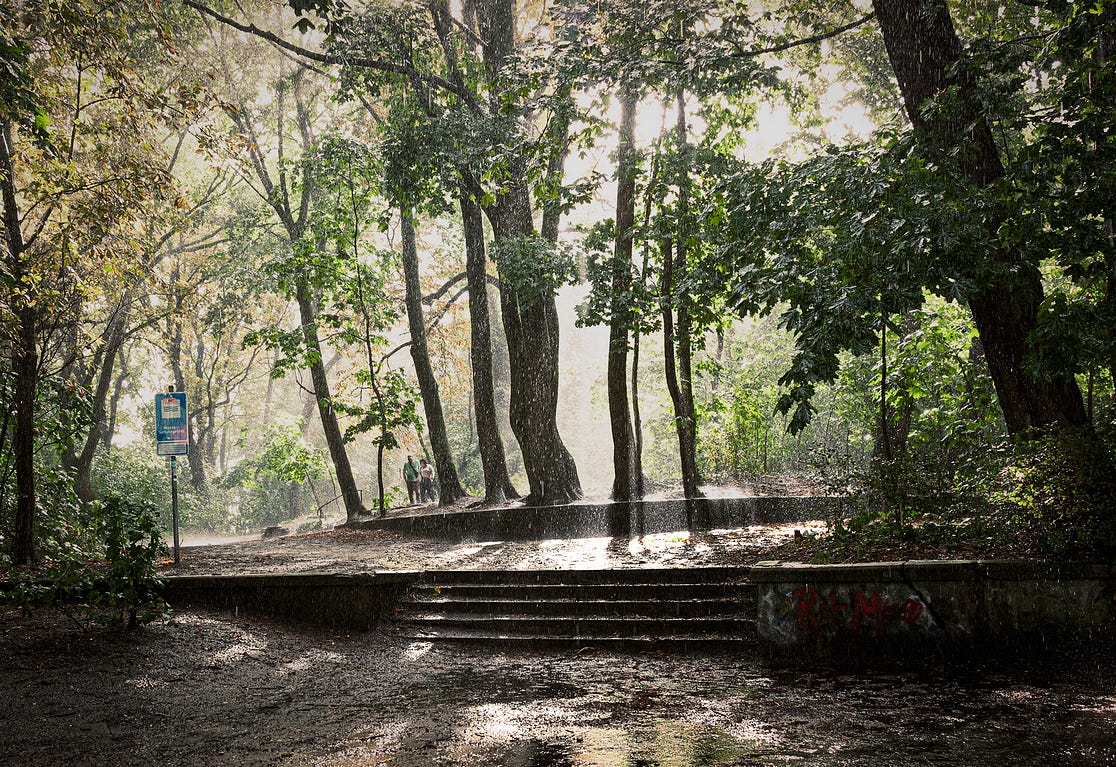
I’m often intimidated by great landscapes. When I stand next to a mountain, or in a simple field where I can see for miles around, it does something special to my soul. It wakes me up.
A mountain will inspire me to better things, the broad green fields remind me that we haven’t ruined it all, quite yet.
When I woke up yesterday morning, I saw the sun shining, blue skies, and brilliant white clouds.
I still have to learn the proper cloud names. It might help me when I plan a photography day. If I know that the clouds rolling past my windows are a sign of light weather, or heavy weather ahead, then I can better prepare.
Never-the-less, I took my camera and tripod. I even packed a microphone in the hope of recording some landscape photography thoughts for a video, a few panned views, me deliberating on what I see. Tripping over branches and slipping on the grass, this is the stuff of solo videography.
It started to rain. The moment I stepped out of the train, into a tram, got off close to the lake and the forest, foot onto the street, and splash. Puddles everywhere. It’s amazing how quickly plans are swept down the drain, and we are left to improvise.
I got into the woodlands, then saw everybody who had gone out for a walk that day huddling under an entranceway. I joined them. It began to pour with rain, then it thundered with a vengeance, lightning crackled in the atmosphere.
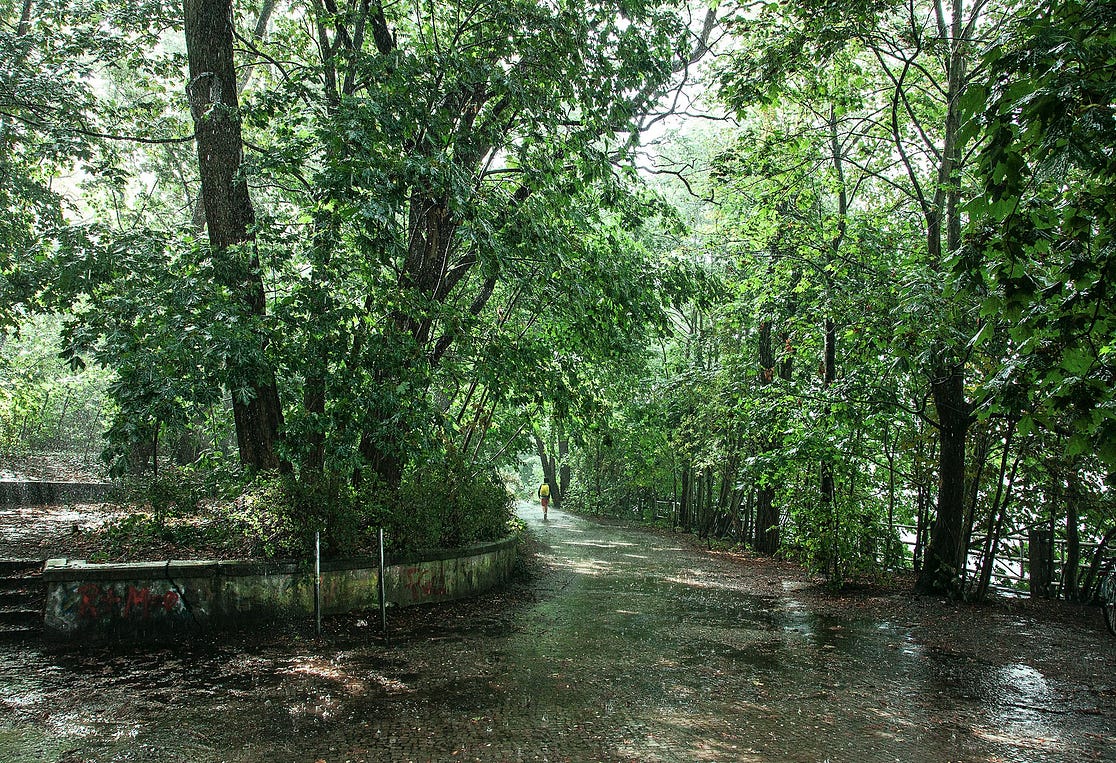
Well, improvise. So I did. I stood under the shelter and pointed my camera at the dinghies quickly making their way back into the dock.
A sudden thunderstorm, lightning on the lake, and a small dinghy with a tall mast is a direct target for captain thunderbolt.
It was difficult to get the shot — they were shifting at speed across the water, and I had a small gap between the tree line to catch a glimpse as they passed.
It gave me an opportunity to be decisive about shutter speed and composition. I fluffed it three or four times, then got the shot below. It’s an interesting shot, yacht sails always make for stark compositions. The worse the weather, the better for a land lubber photographer.
Then, of course, I realised that I should try, at least, to capture the rain splashing in the lake’s surface.
As you can see, the Dinghies are all headed for the “Berliner Bürgerbrau”, a bar full of beer and pretzels. I imagine it’s the “19th hole” of sailing.
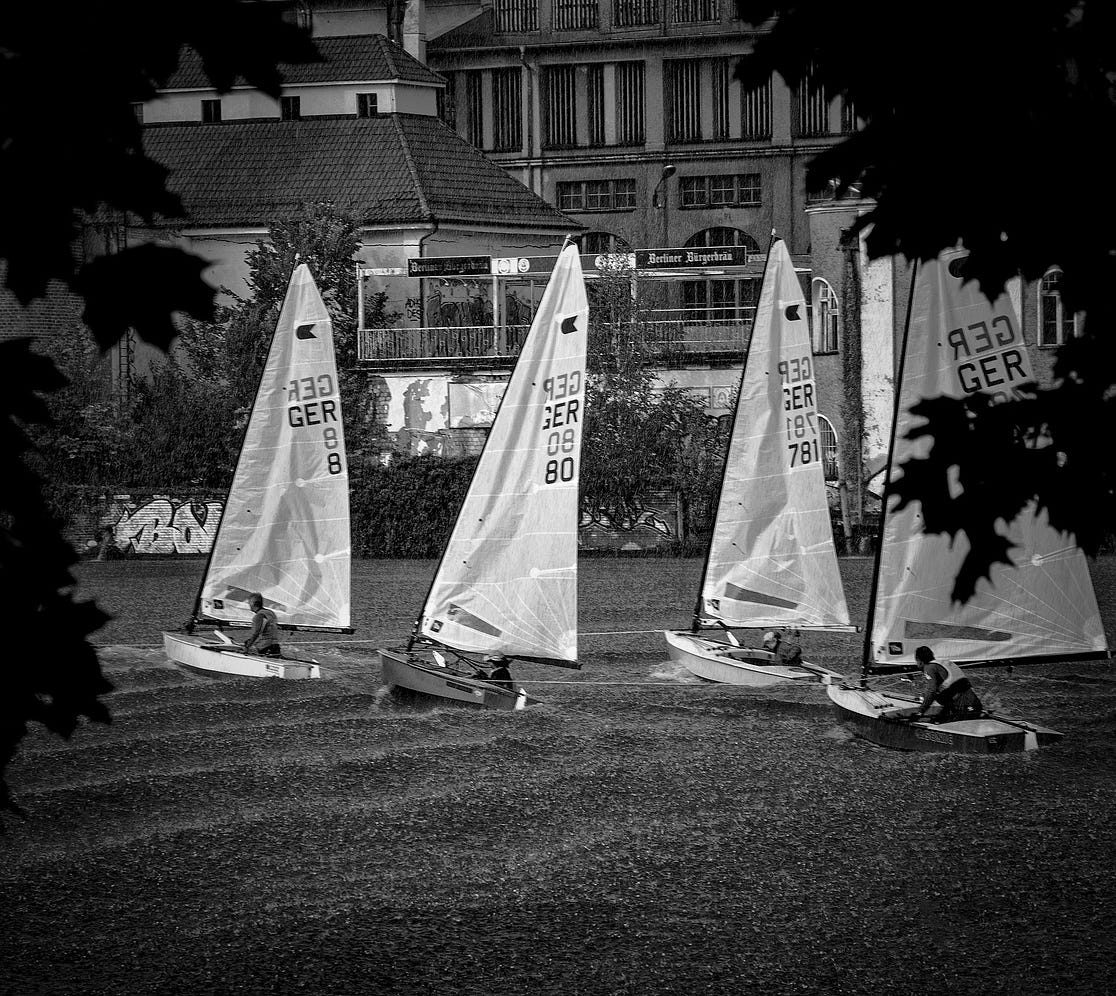
After a couple of shots, I thought about the rain. And how I would best capture the streaking water hammering down around me.
I wouldn’t claim a great success — but it was a good learning experience to concentrate on the idea for a while.
When you look at my photos, you know it’s raining. When I took a deeper look in post-processing, my raindrops were actually pixelated smudges of whiteness. My shutter speed was too slow at 1/250, then 1/500, to capture a streak of fast-moving transparent water. So, I caught the impression of rain, and that’s that.
I took a few shots at 1/1000 of a second, the raindrops looked great where there was light, but I was under cover of trees, the sun had hidden itself, and the photos were a mess of dark and bright that I didn’t want to deal with.
The black and white photo, right, is just a test shot of bouncing rain. On concrete. Again, I captured the impression of it, but blow it up and there’s not a lot of ‘bounce’ in those pixels.
I decided that when I return home, I’ll turn on the kitchen tap and photograph the splashing water until I get it right, and then I’d have learned the lesson.
The one thing that constantly broke my concentration while looking for motifs to photograph, worrying about the heavy downfall soaking my equipment. My Canon 5D isn’t waterproof, my lenses are precious. I need a compact umbrella, and to worry less.
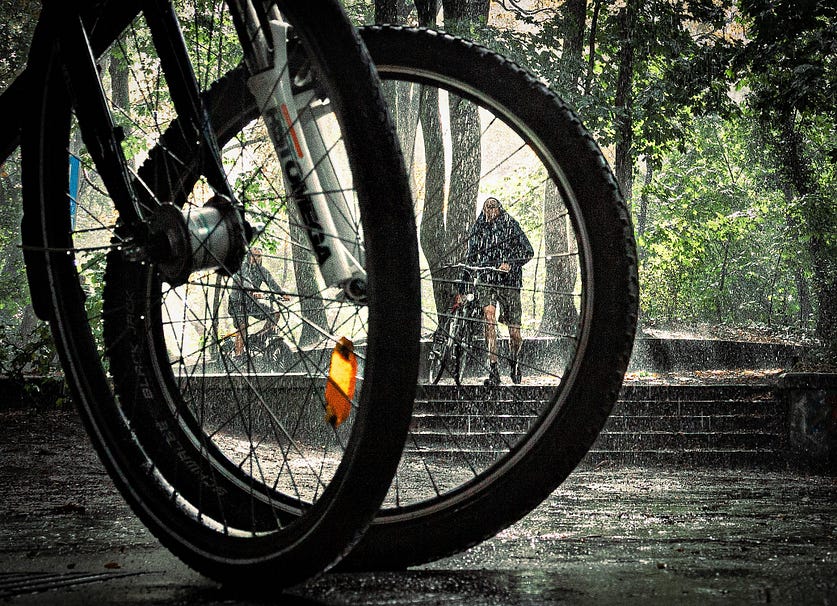
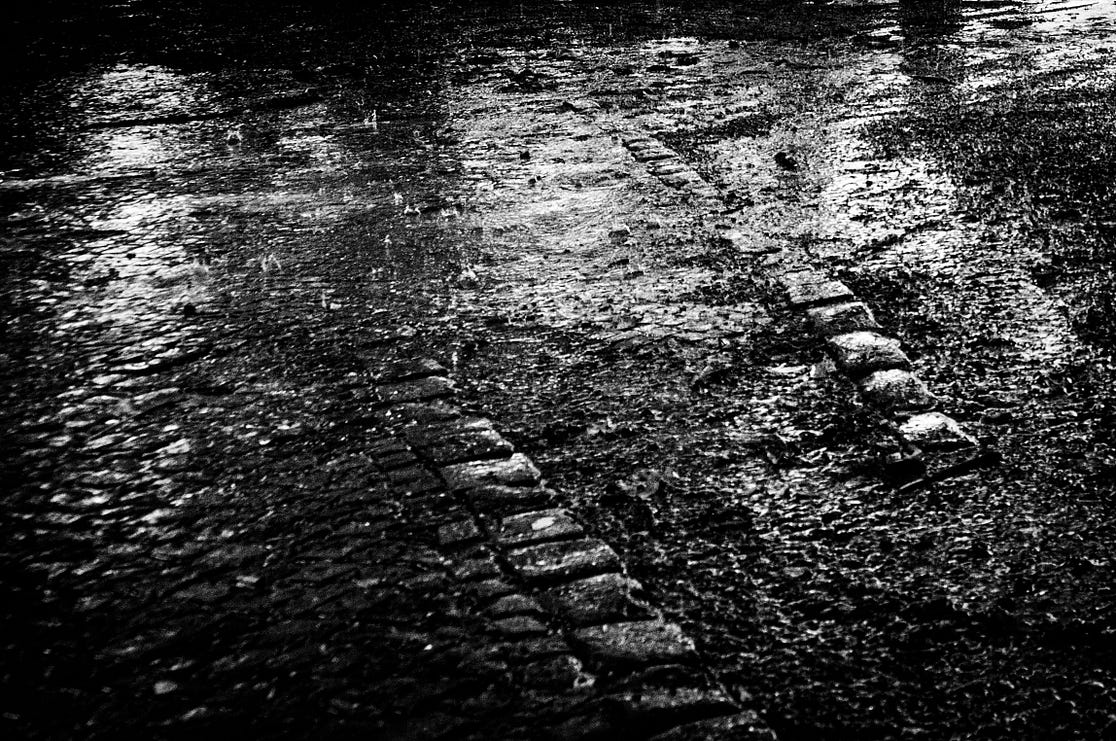
After the rain stopped, I immediately walked into the woodlands. I searched around for some wood stumps, and tree roots that I’d seen a few months earlier.
I knew that they would be drenched in water, and the reflections would inspire my creative impulse.
I set up my tripod and simply started taking photos. I thought it might rain again, so more distractions; it’s best to give yourself to nature, be prepared to get soaked and protect equipment with anything that works. That way you can focus on what you see, get deeper into the shot, and enjoy the moment.
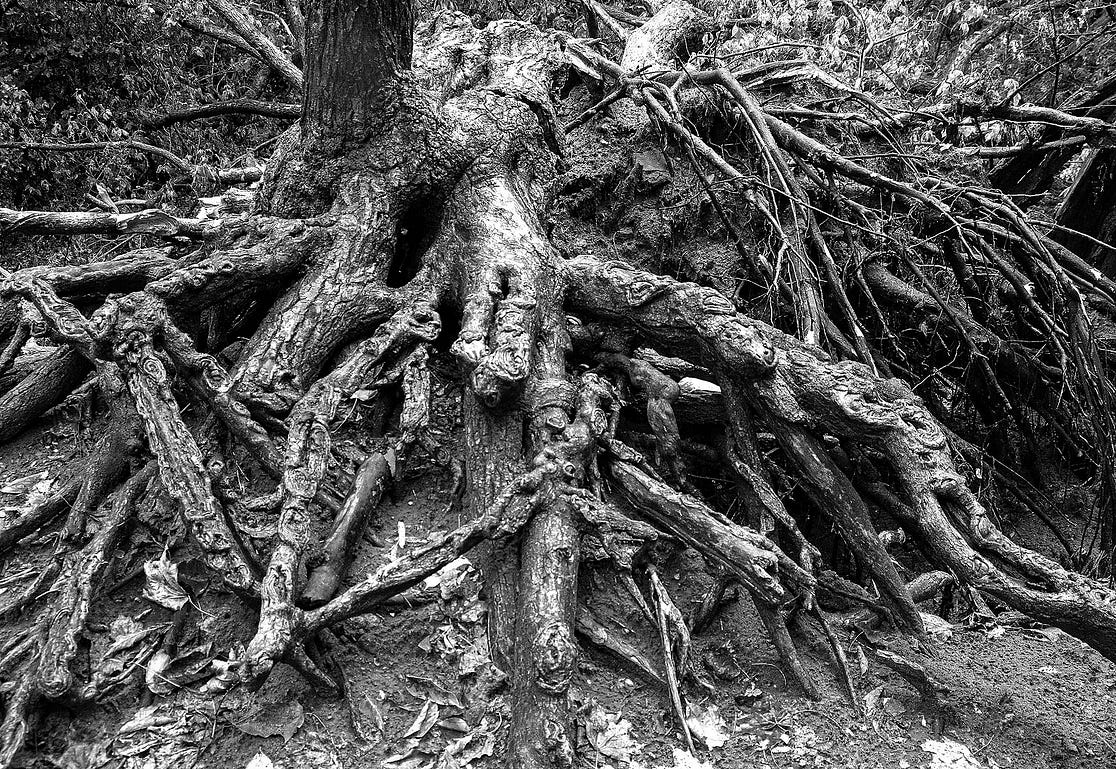
I love these shots. But as I said, I am intimidated by nature — it’s powerful and beautiful. For me, it’s a very different experience to photograph twisted tree roots, than to do street photography. Nature deserves all our attention.
I remind myself that I should think more like a painter, than a snap shooter when I look at a tree.
A painter will spend hours contemplating a landscape, a single tree, then do thumbnail sketches to develop ideas. After that, and only when the painter is sure that they have understood the depth of what they are looking at, will they begin the process of painting. The results often justify the long process.
As photographers, we can learn a lot from the painters. Patience, and studious attitude.
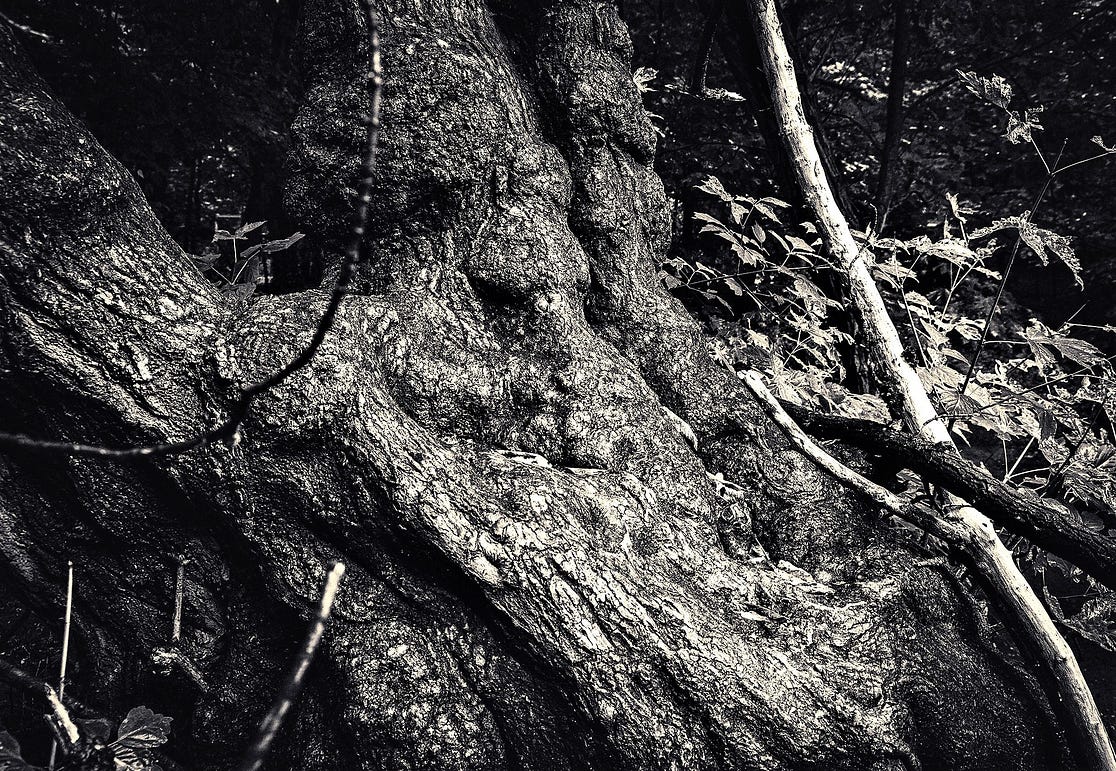
Photography offers us an immediate transcription of the object into the medium of a surface. So, we tend to be quick about seeing and capturing the object. I do that, too.
When I’m in the woods, I can slow down, contemplate, and make decisions that give me better results.
I can watch the rain create tiny jewels that bounce and sparkle on the forest floor. It’s worth the time to wait, to look, and to enjoy nature’s wonders for a while, before pressing the button.
And when the rain has stopped, I see a new landscape of puddled mud, grooves, and lines filled with running water, and how the green and red bark on the trees has become darkened. The forest has transformed, and now presents itself with a different character.
When it’s wet, you hear voices through the trees, and footfall on damp clumps of leaves. Animals go back to their routines of foraging for food.
The shot below is all about the tiny stream of water that snakes through the trees and mud. It caught my eye because the light was perfect for its presentation. Dark shadows, and bright highlights. I looked so long at the snaking stream of water, and I only noticed the cyclist after taking the shot.
She stopped and asked me about my photography. We chatted for five minutes. I noticed that she had wet porridge on her jacket. So I pointed it out to her.
She told me that when it rained earlier, she had the luck to find a hut deep in the woods. She parked her bike and went inside for shelter. It was empty, so she sat in a chair, watched the football game for ten minutes, then wandered into the kitchen.
She then noticed three bowls of hot porridge on the table. There were also three silver spoons, each next to a bowl, one big spoon, then a medium-sized spoon, and a smaller spoon placed next to a smaller bowl of porridge, she ate all three bowls.
She returned to the football on T.V. where she finished off the third bowl of porridge, when she heard a tiny voice in the kitchen complain that somebody had eaten their porridge. That’s when she realised that she was in the wrong hut. She ran out the door, and jumped on her bike.
As she rode away, sliding in the thick mud, she heard heavy footsteps and deep growls behind her. Finally, she managed to shake off her pursuers by riding through a gooseberry bush where a hare was eating its lunch.
She simply said, “And that’s how I got porridge on my jacket.”
I nodded, and we said goodbye.
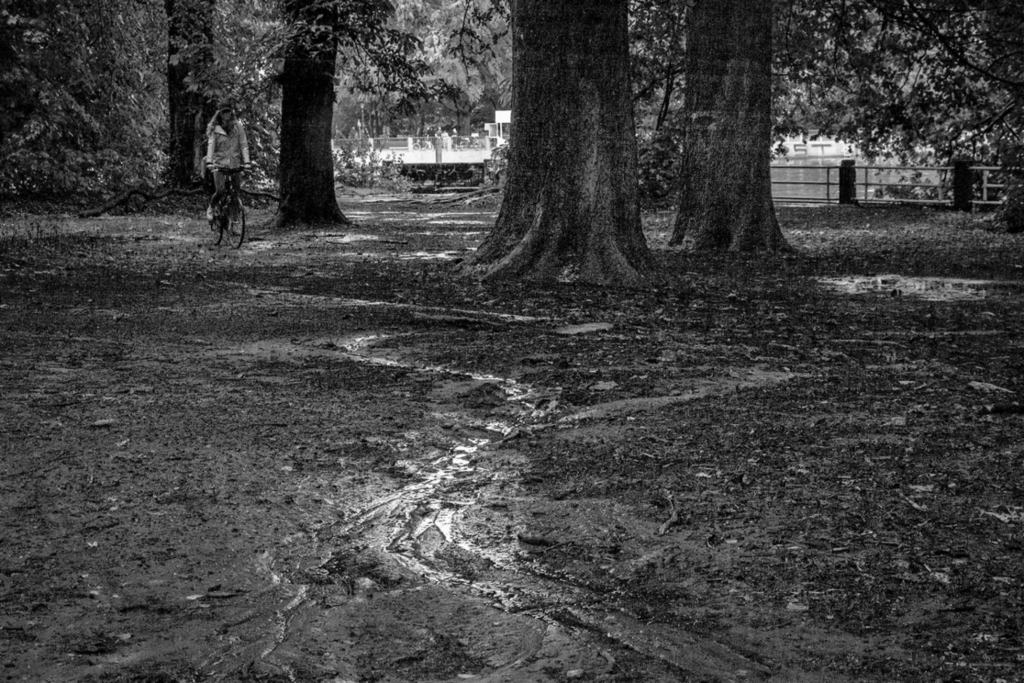
Summer Closes into Swirling Clouds and Brightly Carpeted Landscapes — Photography
Leave a Reply
You must be logged in to post a comment.